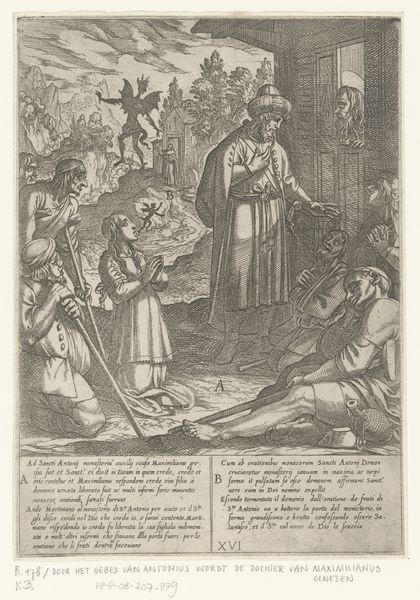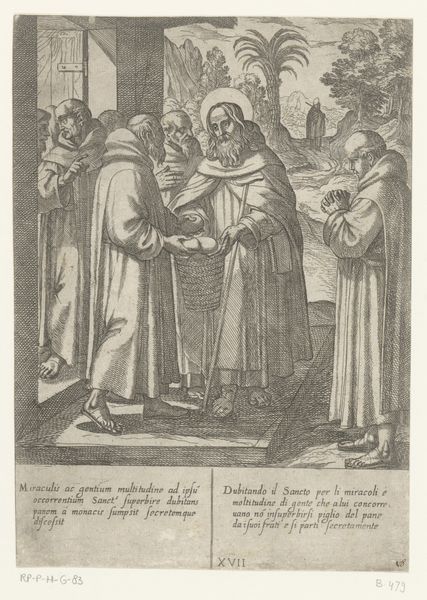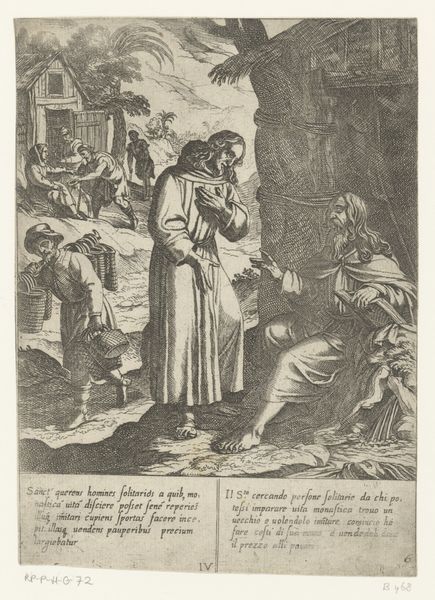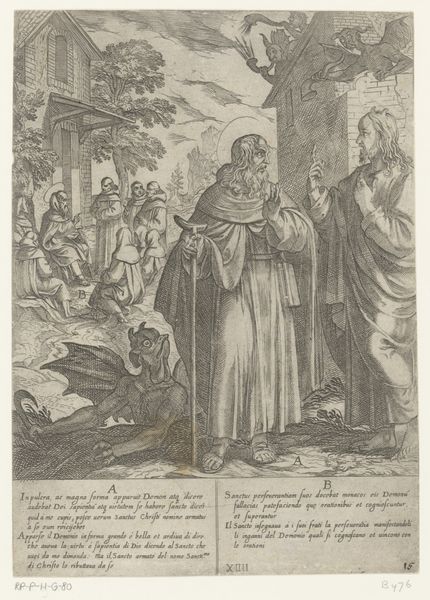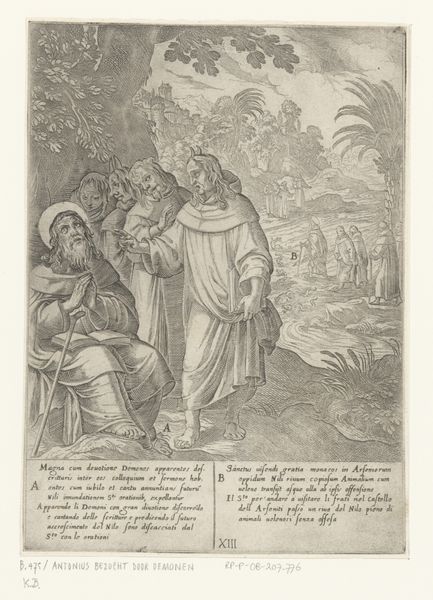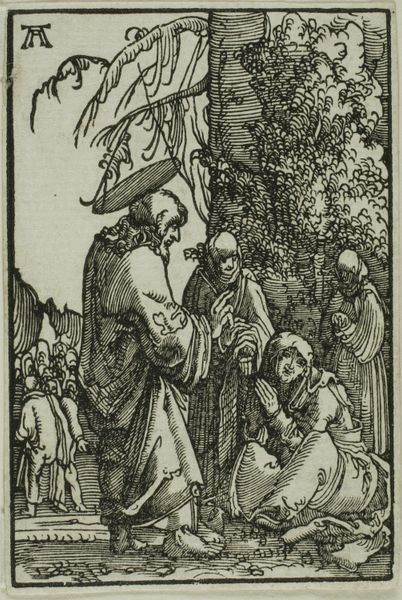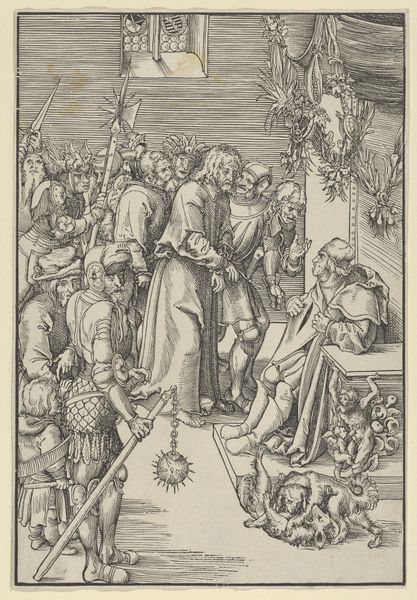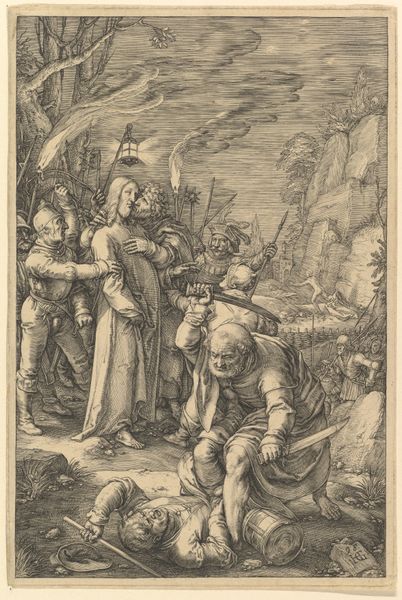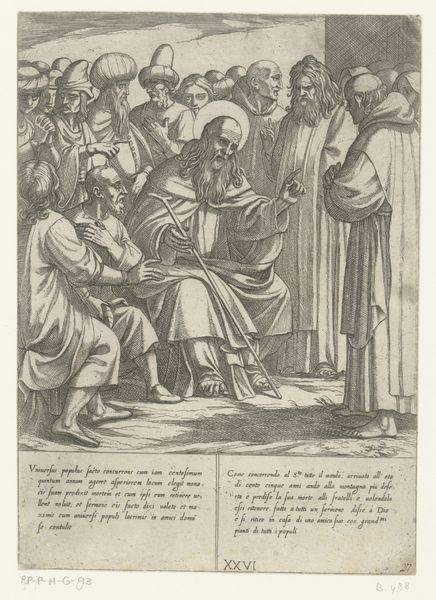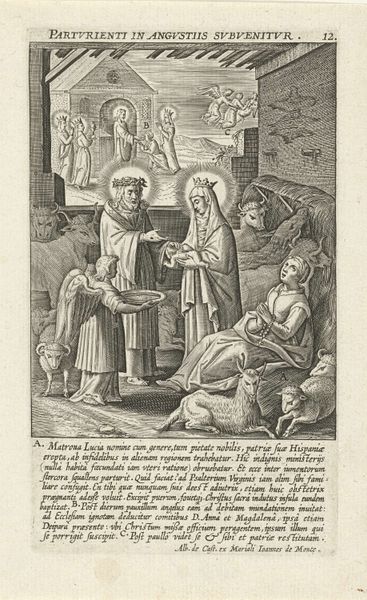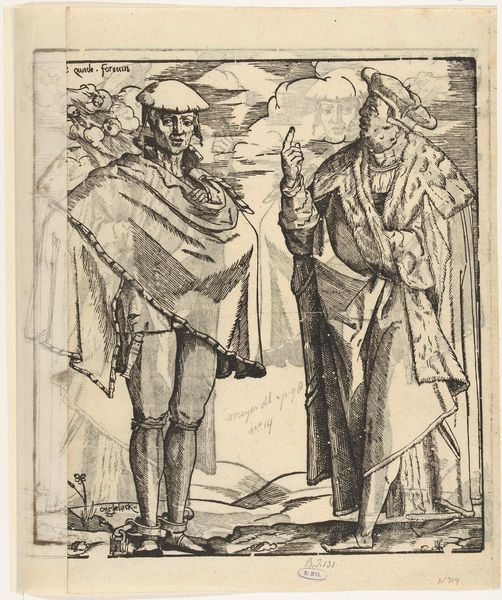
H. Antonius ontvangt voedsel en gereedschap om de grond te bewerken 1598
0:00
0:00
print, engraving
#
narrative-art
#
baroque
# print
#
pen illustration
#
pen sketch
#
book
#
old engraving style
#
figuration
#
line
#
history-painting
#
engraving
Dimensions: height 231 mm, width 163 mm
Copyright: Rijks Museum: Open Domain
Curator: This engraving from 1598 by Antonio Tempesta, currently held in the Rijksmuseum, depicts a scene titled "H. Antonius ontvangt voedsel en gereedschap om de grond te bewerken". Editor: It's striking! The line work is incredibly detailed. I'm immediately drawn to the contrast between the lighter figures and the densely etched background. It has a kind of humble, devotional mood despite the busy composition. Curator: Indeed, Tempesta was a master engraver. You see how the Baroque style is emerging. The very *act* of engraving, creating multiples, makes it accessible, disseminating this imagery to a broader audience. Look at the laborers offering the saintly figure implements. Editor: It makes you consider how social hierarchies are reproduced, right? Saint Anthony receiving the tools frames physical labor, agricultural practice as not only vital, but holy. How these monks worked to not only establish their own image through narratives but cultivate an entire ecosystem centered on monastic grounds and power is deeply fascinating. Curator: The placement in the Rijksmuseum itself speaks to a canonization of sorts. What was originally conceived as perhaps devotional material gets repositioned into this national cultural narrative... elevated in value through institutional recognition and public consumption in museum spaces. Editor: Precisely! Its status shifted by how its historical value has become commodified over centuries of display, trading, archiving… the way this humble tool functions in the grand scheme of things. Curator: Yes, and perhaps in a time increasingly distant from the physical act of engraving or cultivating, viewing becomes an act of almost anthropological viewing. This print allows an intriguing historical moment that encourages dialogue between social labor and material interpretation. Editor: Exactly! Considering both the physical labor represented and the production itself prompts important questions. It reminds me that art history, like agriculture, requires cultivation and conscious tending to flourish!
Comments
No comments
Be the first to comment and join the conversation on the ultimate creative platform.
